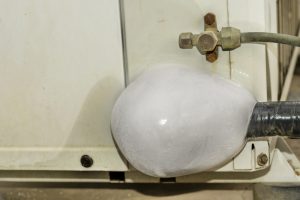Finding ice on your air conditioner’s coil can be alarming and inconvenient, especially during a sweltering summer. Understanding why ice forms and how to address it can help you restore your AC’s functionality quickly and prevent further damage. Here’s a comprehensive guide on why ice forms on AC coils and why AC repair in Mississauga, ON is so important.
Why Does Ice Form on AC Coils?
Ice forming on your air conditioner’s coils typically signals an underlying issue. Here are the most common reasons:
1. Restricted Airflow
Restricted airflow is one of the primary causes of ice formation. When air cannot flow freely over the coils, the refrigerant inside the coils gets too cold, causing moisture in the air to freeze on contact. Blocked or dirty air filters, closed vents, or obstructions around the unit can restrict airflow.
2. Low Refrigerant Levels
Low refrigerant levels can also lead to ice formation. When the refrigerant level is insufficient, the pressure inside the coils drops, causing the temperature to fall below freezing. This condition usually indicates a refrigerant leak, which requires professional repair.
3. Dirty Coils
Dirt and debris on the coils can act as an insulator, preventing heat exchange and causing the temperature to drop below freezing. Regular maintenance and cleaning can prevent this issue.
4. Thermostat Issues
A malfunctioning thermostat might not accurately gauge the indoor temperature, causing the AC to run excessively and freeze the coils. Checking and recalibrating the thermostat can resolve this issue.
What to Do If You Find Ice on Your AC Coils
Discovering ice on your AC coils means you need to take action quickly to prevent further damage. Here are the steps you should follow:
1. Turn Off the AC
The first step is to turn off the air conditioner. Running the AC with frozen coils can cause severe damage to the compressor and other components. Turn the thermostat to “off” and switch the fan to “on” to help thaw the ice.
2. Check and Replace the Air Filter
A dirty air filter can restrict airflow, leading to ice formation. Check your air filter and replace it if it’s dirty. Regularly replacing the air filter every 1-3 months can help maintain proper airflow and efficiency.
3. Clear Obstructions Around the Unit
Ensure there are no obstructions around the indoor and outdoor units. Remove any furniture, drapes, or plants that may block airflow. Keeping the area around your AC clear can improve performance and prevent ice formation.
4. Inspect the Thermostat
Ensure your thermostat is functioning correctly. If you notice any issues with temperature readings or if the AC runs continuously, it may be time to replace or recalibrate the thermostat.
5. Schedule AC repair
AC repair can be the solution you’re looking for. Also, schedule regular check-ups with a professional HVAC technician to inspect, clean, and tune up your system. This proactive approach can catch potential issues early and extend the life of your AC unit.

